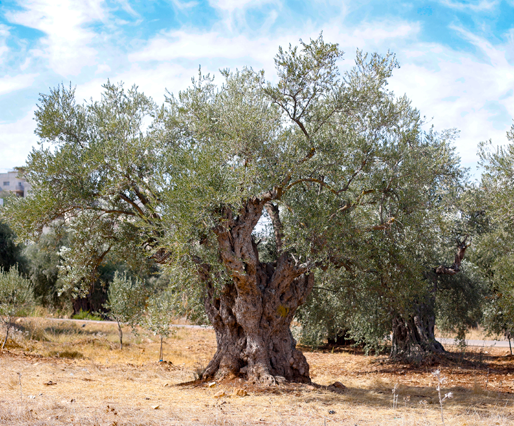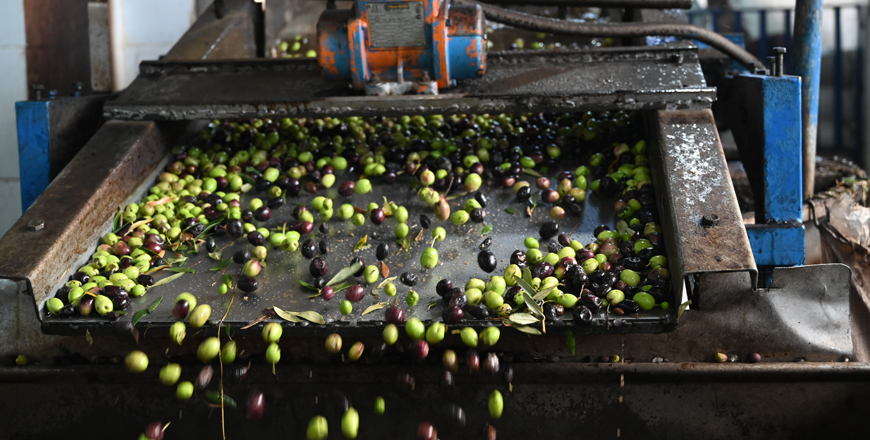You are here
NARC advises farmers to delay olive milling, citing climate change impacts
By Mays Ibrahim Mustafa - Oct 11,2023 - Last updated at Oct 11,2023

The Kingdom is home to Mehras olives, one of the oldest genotypes of olive trees in the world. Mehras oil also enjoys a distinctive and fatty acid composition equal to up 70 per cent, which is one of the highest compared with other varieties (Photo courtesy of NARC)
AMMAN — The impact of climate change on temperatures and precipitation patterns in Jordan has led to delays in the flowering and fruit-setting stages of olives, said Head of the Olive Research Department at the National Agricultural Research Centre (NARC) Ibrahim Al Amad.
In an interview with The Jordan Times on Wednesday, he noted that these indicators have led the Ministry of Agriculture to delay opening olive presses across the Kingdom until October 25, instead of October 15 like last year, delaying the harvest season by 15 days to ensure that olives are ripe enough for milling.
Amad added that some mill owners have protested this decision for fear that the delay will impact their businesses; however, NARC urges farmers to hold off harvesting their olives until the end of the month.
The centre has received complaints from farmers who have harvested and milled their olives, resulting in a production rate equal to five kilogrammes of oil for each 100 kilogrammes of olives, meaning that the olive fruit only contained 5 per cent oil, instead of 15 to 20 per cent.
He also pointed out that the best time for harvesting olives differs depending on the region and should be determined based on the purpose of use (pickling or milling).
Farmers can decide when to harvest olives for milling through various indicators, including colour changes, according to Amad. He explained that when 70 per cent of the olive fruit’s skin turns dark purple or black, it enters the phase of physiological maturity, offering an optimal quality and quantity of oil when milled.
The fruits of olives cultivated in areas below sea level, such as the Jordan Valley, ripen earlier than those of trees cultivated in areas above sea level, he noted.
For pickling purposes, olives are harvested when their colour changes from dark green to yellowish green before the appearance of any purple spots. Harvesting for pickling is recommended until the end of October, following which harvesting olives for milling should commence, lasting until the beginning of December, Amad added.
He pointed out that delaying harvesting after this period increases the quantity of oil, while also reducing its quality, measured based on its acidity levels. NARC uses the International Olive Council system, which classifies olive oil based on the degree of acidity into extra virgin olive oil (no more than 0.8 per cent), fine virgin olive oil (no more than 2 per cent), ordinary virgin olive oil (nor more than 3.3 per cent), and virgin olive oil not fit for consumption (over 3.3 per cent).
Amad advised farmers to place harvested olives in agricultural plastic bins, instead of burlap and plastic bags, which can “suffocate” fruits through preventing air access, ultimately increasing the acidity of their contained oil or causing them to rot. It’s also preferable to mill olives immediately after they’re harvested.
He added that fallen olive fruits could be infected by what is known as the “olive fruit fly”, which can increase their acidity to a degree that makes them unsuitable for human consumption. That’s why it’s recommended to mill fallen fruits separately from picked ones.
With an investment volume that exceeds $1.4 billion, the Kingdom’s olive sector holds great economic potential, supporting the livelihoods of over 80,000 Jordanian families, according to Amad.
He noted that olive varieties harvested for their oil in Jordan include the Nabali Baladi, Nabali Muhassan, Kanabisi and Souri. The Kingdom is also home to Mehras olives, one of the oldest genotypes of olive trees in the world.
“The results of studies conducted by NARC revealed that up to 30 per cent of oil can be extracted from Mehras olives, one of the highest percentages among olive varieties in the world. Mehras oil also enjoys a distinctive and fatty acid composition equal to up 70 per cent, which is one of the highest compared with other varieties, in addition to a unique fruity flavour and sensory qualities,” Amad said.
He added that NARC is currently working with its partners from both the public and the private sector, including the Ministry of Culture to list Mehras olives on UNESCO’s list of intangible cultural heritage.
Amad also noted that the 23rd edition of the annual 10-day National Olive Festival and the Rural Products Exhibition, organised by NARC, will take place on November 23 in Mecca Mall in Amman, showcasing authentic Jordanian rural products, including olive oil.
Related Articles
AMMAN — A source of income for thousands of Jordanian families and a sizzling commodity present in all households across the Kingdom, olive
AMMAN — Since the start of the olive harvest season in mid-October, around 10 per cent of olives have been picked for oil production and oth
AMMAN — As the olive season approaches, the National Agricultural Research Centre (NARC) and the Olive Oil Producers and Mill Owners Syndica














